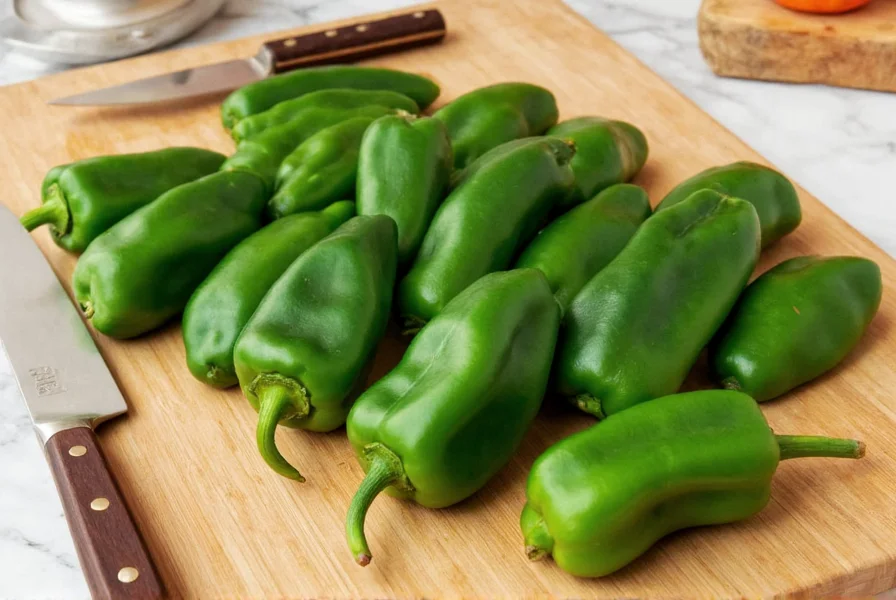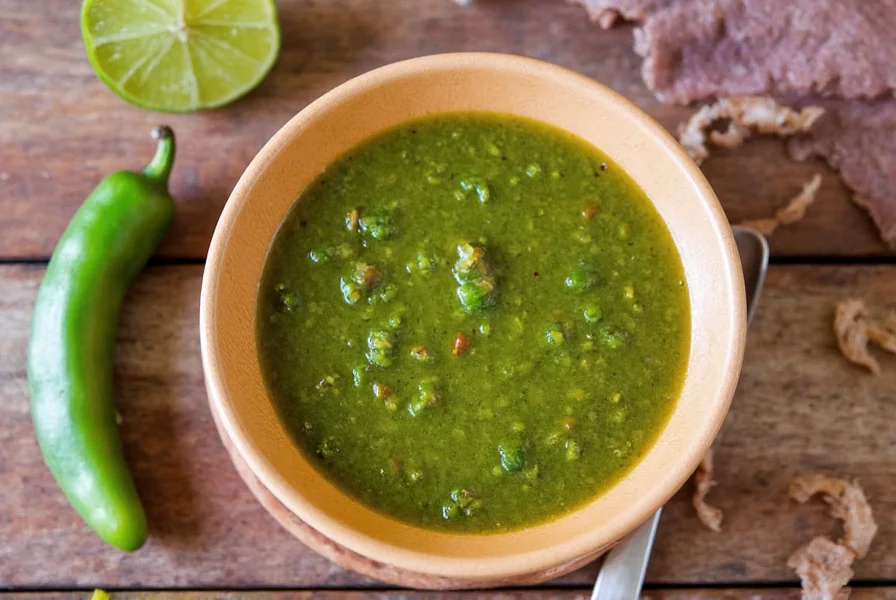Authentic poblano pepper salsa brings a distinctive earthy depth to Mexican cuisine without overwhelming heat. Unlike spicier alternatives like habanero salsa, this versatile condiment showcases the poblano's unique flavor profile—smoky when roasted, grassy when raw—making it ideal for everyday meals. Chefs appreciate how it enhances dishes without dominating them, striking that perfect balance between flavor and mild heat that appeals to most palates.
Understanding Poblano Peppers
Poblano peppers (chiles poblanos) originate from Puebla, Mexico, and are central to traditional Mexican cooking. These large, dark green peppers measure 3-6 inches long with a heart-shaped profile. Their heat registers between 1,000-2,000 Scoville units—milder than jalapeños (2,500-8,000 SHU) but more complex in flavor.
When selecting poblanos, look for firm, glossy skin without wrinkles or soft spots. Fresh peppers should feel heavy for their size. As they mature, poblanos turn red and become chiles anchos—dried anchos feature prominently in mole sauces. This transformation significantly alters their flavor profile, developing raisin-like sweetness.

Classic Roasted Poblano Pepper Salsa Recipe
This authentic preparation method develops the peppers' natural sugars while preserving their distinctive flavor. Roasting is essential for achieving that signature smoky depth that defines traditional poblano pepper salsa recipes.
| Ingredient | Measurement | Preparation Notes |
|---|---|---|
| Fresh poblano peppers | 4 medium | Charred and peeled |
| Roma tomatoes | 3 medium | Stemmed and halved |
| White onion | ½ cup diced | Reserve 2 tbsp for garnish |
| Fresh cilantro | ¼ cup chopped | Stems removed |
| Garlic cloves | 2 | Peeled |
| Lime juice | 2 tbsp | Freshly squeezed |
| Ground cumin | ½ tsp | Optional for smokiness |
Preparation Steps
- Char the peppers: Place poblanos directly over gas flame or under broiler, turning frequently until blistered and blackened (8-10 minutes). Transfer to sealed plastic bag for 10 minutes to steam.
- Peel and seed: Remove skins under running water, discarding charred bits. Cut open peppers, remove seeds and membranes (retain some seeds for extra heat).
- Roast tomatoes and garlic: Place tomatoes cut-side down and garlic on baking sheet. Broil 5-7 minutes until charred.
- Blend ingredients: Combine roasted peppers, tomatoes, onion, garlic, cilantro, lime juice, and cumin in food processor. Pulse to desired consistency (smooth or chunky).
- Rest and serve: Transfer to bowl, cover, and refrigerate at least 1 hour before serving to allow flavors to meld.
Variations for Different Flavor Profiles
Professional chefs often modify this base recipe to create distinctive poblano pepper salsa variations. Understanding these adaptations helps you customize based on occasion and preference:
- Tomatillo Poblano Salsa: Substitute half the tomatoes with tomatillos for tangier flavor (ideal for fish tacos)
- Smoked Chipotle Version: Add 1-2 chipotle peppers in adobo for deeper smokiness (perfect with grilled meats)
- Fresh Raw Salsa: Skip roasting for brighter, grassier flavor (best with seafood)
- Creamy Avocado Salsa: Blend in 1 ripe avocado for richer texture (excellent with eggs)
Perfect Pairings for Poblano Pepper Salsa
This versatile sauce complements numerous dishes while enhancing rather than overwhelming their flavors. Unlike spicier salsas that dominate a plate, poblano pepper salsa works as a harmonious accent:
- Breakfast: Huevos rancheros, scrambled eggs, or breakfast burritos
- Main Courses: Enchiladas, grilled chicken, roasted vegetables, or black bean soup
- Appetizers: Queso fundido, stuffed mushrooms, or as a dip with plantain chips
- Unexpected Uses: Mixed into mayo for sandwiches, stirred into rice, or as pizza sauce base

Common Preparation Mistakes to Avoid
Even experienced cooks make these errors when preparing poblano pepper salsa recipes:
- Under-roasting peppers: Incomplete charring leaves raw flavor. Proper roasting develops complex sugars.
- Over-blending: Process until just combined—excessive blending heats ingredients and dulls flavors.
- Serving immediately: Flavors need 1-2 hours to meld. Refrigerate before serving for best results.
- Using old peppers: Poblanos lose moisture quickly. Fresh peppers yield better texture and flavor.
- Ignoring acid balance: Adjust lime juice to taste—proper acidity brightens the earthy pepper flavor.
Storage and Shelf Life
Properly stored, homemade poblano pepper salsa maintains quality for 5-7 days in the refrigerator. Transfer to an airtight container, ensuring the salsa is fully submerged to prevent oxidation. For longer preservation, freeze in ice cube trays then transfer cubes to freezer bags (keeps 3 months). Thaw overnight in refrigerator before use—never microwave, as this alters texture and flavor.
Frequently Asked Questions
How spicy is poblano pepper salsa compared to other salsas?
Poblano pepper salsa registers 1,000-2,000 Scoville units, making it significantly milder than jalapeño salsa (2,500-8,000 SHU) and much milder than habanero salsa (100,000-350,000 SHU). The heat level remains adjustable by controlling how many seeds and membranes you include from the roasted peppers.
Can I make poblano pepper salsa without roasting the peppers?
Yes, you can prepare fresh raw poblano pepper salsa by using unroasted peppers. This version has a brighter, grassier flavor profile that works well with seafood and lighter dishes. However, roasting develops complex sugars and creates the signature smoky depth characteristic of traditional Mexican poblano salsas.
What's the difference between poblano and pasilla peppers in salsa?
Poblano peppers are fresh, dark green peppers with earthy flavor, while pasilla peppers are dried poblanos with raisin-like sweetness and deeper color. Fresh poblano salsa has brighter flavor, while pasilla-based salsa offers more complex, wine-like notes. Pasilla salsa typically requires rehydrating the dried peppers before blending.
Why does my poblano pepper salsa taste bitter?
Bitterness usually comes from either over-charred peppers or insufficient roasting. If peppers are blackened but not properly blistered, they develop acrid flavors. Ensure you roast until evenly blistered, then steam in a covered container before peeling. Adding ¼ teaspoon of sugar or蜂蜜 can balance bitterness if it occurs.











 浙公网安备
33010002000092号
浙公网安备
33010002000092号 浙B2-20120091-4
浙B2-20120091-4